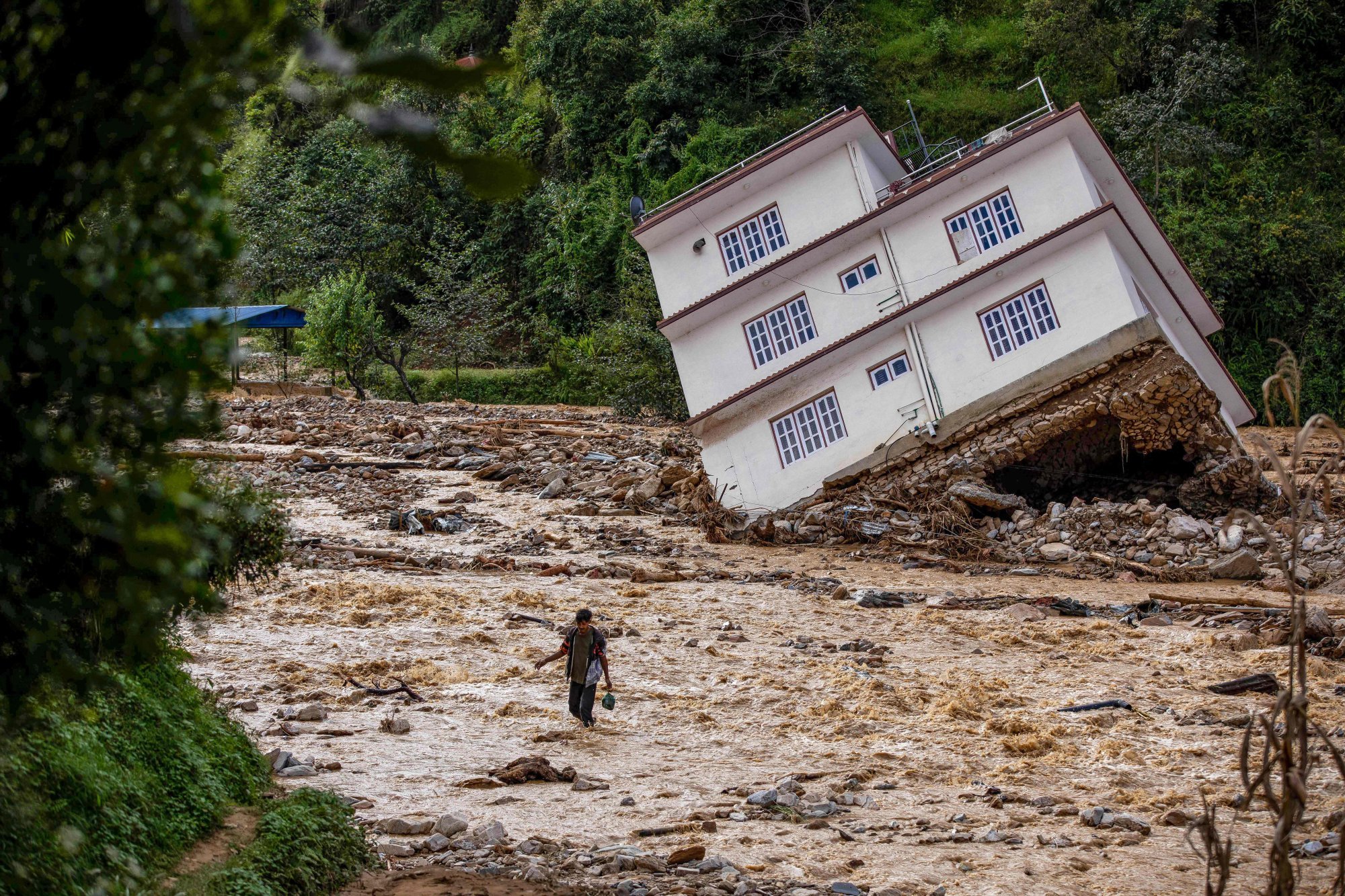Asia is heating up at double the global rate amid climate crisis, UN warns
Asia’s vast land mass is intensifying extreme heatwaves as its sea surface warms at twice the global average, a new UN report reveals

Asia, home to more than half the world’s population, is heating up nearly twice as fast as the rest of the world, with surging temperatures intensifying extreme weather, threatening food security and fragile ecosystems, and inflicting billions in economic losses, according to a new United Nations report.
The State of the Climate in Asia 2024 report, released by the World Meteorological Organization (WMO) – a UN agency charged with monitoring the planet’s atmosphere and climate – that last year was either the hottest or second-hottest ever recorded in Asia, depending on the data set.
On average, temperatures in Asia rose 1.04 degrees Celsius (1.87 degrees Fahrenheit) above the 1991–2020 baseline, driving heatwaves and weather disasters from the Himalayas to the Pacific coast.
The report reveals that between 1991 and 2024, the continent’s warming trend was nearly double that of the 1961–1990 period – a result of Asia’s vast land mass, which heats more quickly than the world’s oceans. Spanning from the equator to the Arctic, the continent is acutely at risk from pronounced land-based warming.
Meanwhile, the planet’s three principal greenhouse gases – carbon dioxide, methane and nitrous oxide – reached unprecedented highs in 2023, the latest year with consolidated data.

“Extreme weather is already exacting an unacceptably high toll,” said WMO Secretary General Celeste Saulo, adding that the ability to forecast increasingly erratic weather was becoming more important than ever to save lives and livelihoods.
Prolonged heatwaves battered East Asia from April to November last year, with monthly average temperatures shattering records in Japan, South Korea and China. Heatwaves also swept through Southeast Asia, Central Asia and the Middle East, with Myanmar registering a new national temperature record of 48.2 degrees Celsius (118.7 degrees Fahrenheit).
This year, after a cooler-than-usual summer, northwestern India has been gripped by a severe heatwave, with daytime temperatures soaring above 44 degrees in parts of the capital, New Delhi.
The onslaught of extreme weather brings further hazards. Tropical cyclones and droughts are battering agriculture and infrastructure. Last year, Tropical Cyclone Yagi tore through Vietnam, the Philippines, Laos, Thailand, Myanmar and China, leaving widespread destruction in its wake.
Asia’s sea surface warming rate over the past decade was nearly double the global average, as marine heatwaves affected a record expanse of ocean. Average sea surface temperatures climbed at a rate of 0.24 degrees per decade – twice the global mean of 0.13 degrees.
Sea levels on Asia’s Pacific and Indian Ocean coasts rose faster than the global average, heightening risks for the region’s low-lying coastal communities, the report found.
In 2024, the majority of Asian waters endured marine heatwaves of strong, severe or extreme intensity – the largest area affected since records began in 1993. Especially hard hit were the northern Indian Ocean and the seas bordering Japan, the Yellow Sea and the East China Sea.
Ocean warming is pushing sea levels higher, altering currents, and changing the very fabric of marine ecosystems, the report cautions. It can also shift storm patterns, increase ocean stratification, and disrupt marine life.
Last August and September, nearly 15 million sq km (5.8 million square miles) of Asian ocean – about one-tenth of the world’s ocean surface, equivalent in size to the Russian Federation and more than 1.5 times the area of China – were affected.

At the continent’s heart, reduced winter snowfall and relentless heatwaves are shrinking glaciers in the central Himalayas and Tian Shan region of Central Asia. Of 24 monitored glaciers, 23 lost mass last year, raising the risk of glacial lake outbursts and catastrophic flooding, the report found.
The High Mountain Asia region, centred on the Tibetan Plateau and known as the world’s Third Pole, contains the largest volume of ice outside the polar regions, with glaciers spanning some 100,000 sq km (38,600 square miles).
Weather extremes
The human toll is already adding up. In July last year, heavy rainfall and landslides in Kerala, southern India, killed more than 350 people. In Nepal, record-breaking September rains claimed 246 lives and caused losses estimated at US$94 million.
Elsewhere, a severe drought in China left about 4.8 million people affected and decimated crops across more than 335,000 hectares (828,300 acres), the report said.
In April last year, drought struck the Huanghuai and Jianghuai regions of China, intensifying over two months before heavy rain abruptly ended the dry spell – triggering floods.

A separate analysis by the UK-base Grantham Institute on Climate Change and the Environment calls on nations to commit to emissions cuts ahead of the annual UN Climate Conference in November, with the world set to breach the Paris Agreement’s 1.5-degree warming threshold within this decade.
Joeri Rogelj and Lavanya Rajamani of the institute, in a paper published on June 19, argue that reducing emissions rapidly in the near future should be the focus, rather than measuring when the limit is breached.
“1.5 degrees of warming is just around the corner and it will take a Herculean effort to avoid it,” Rogelj said.
“This is deeply concerning, but crossing it makes the target more important because every fraction of warming – whether it is 1.6, 2 or 3 degrees – creates a more dangerous world and the longer we stay above 1.5 degrees, the higher the losses and damages for people will be.”
Exceeding 1.5 degrees, the research warns, greatly amplifies climate risks, including perilous sea level rise, the collapse of coral reefs and the melting of ice sheets.